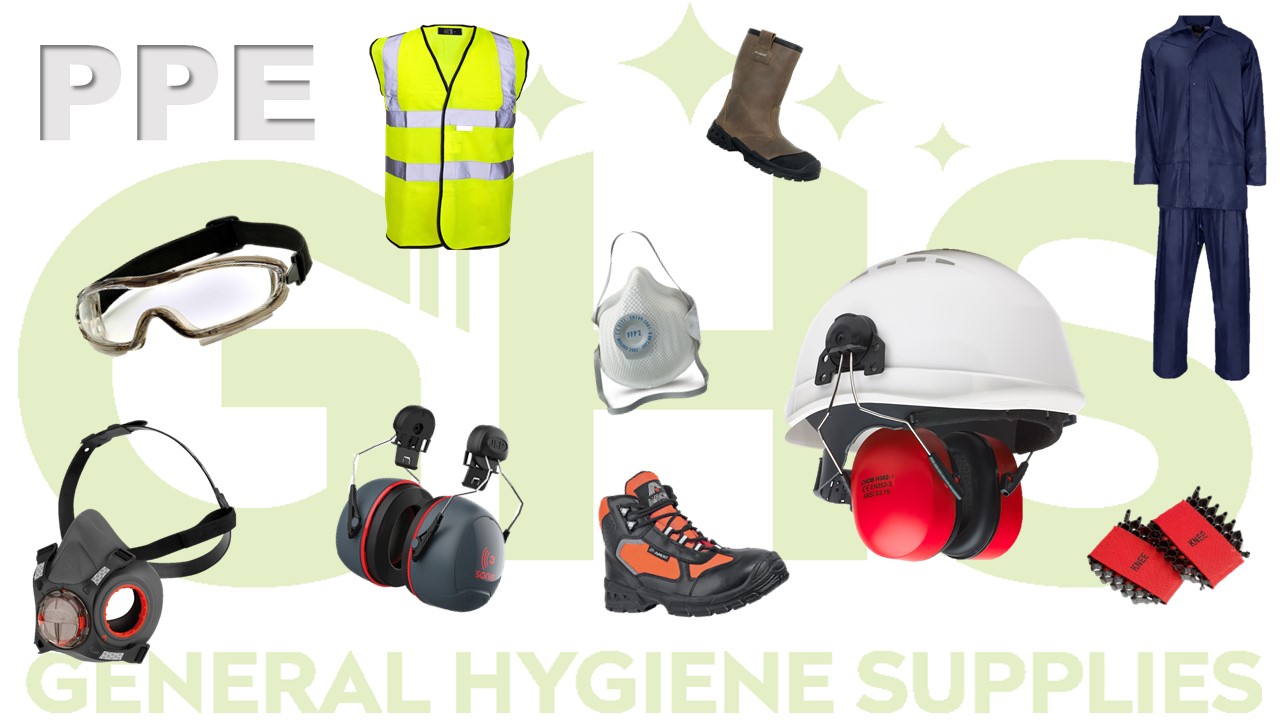Information
The Construction Industry and PPE
Personal Protective Equipment aka PPE is equipment that will protect the user against health or safety risks at work…
The Construction Industry require personal protective equipment to protect their workforce and help ensure they improve productivity. The presence of safety equipment can play a huge role in achieving productivity targets as ‘lost time injury’ can seriously damage output.
RIDDOR reported the following accidents within the workplace for 2019/20;
Slips trips or falls accounted for 29%, Handling, lifting or carrying 19%, Struck by moving object 11%, Falls from a height 8%.
Labour Force Survey in 2019/20 (LFS) reported the following;
525,000 injuries resulting in up to 7 days absence from work. 168,000 injuries resulting in more than 7 days absence from work
Eye Protection
Working on a building site presents multiple eye hazards for construction workers. Safety eyewear must protect the wearer from projectiles but contractors can also be at risk from other elements such as cement dust, liquid chemicals, metal splash, glass, gas and vapour, radiation and UV from the sun. A one style fits all approach to specifying safety eyewear must be avoided and needs to be task appropriate with a correct fit, making sure the eye protection chosen has the right combination of impact/dust/splash/molten metal eye protection.
Eye Protection Options; Safety spectacles, goggles, face screens, face shields, visors
Head and Neck Protection
Safety helmets are required to be worn at all times while on-site to comply with Personal Protective Equipment Regulations 1992 and employers must supply all employees with suitable head protection. Beware of fake safety helmets, ensure any PPE provided to employees comes from a reputable supplier and carries the relevant CE mark and protection.
Every construction site will have different hazards and conditions, but one constant for all is a requirement for head and neck protection. Hazards within the construction industry can vary; impact from falling or flying objects, risk of head bumping, hair getting tangled in machinery, chemical drips or splash, climate or temperature.
Head and Neck Protection Options; Industrial safety helmets, bump cap, hairnets, balaclava hood, masks
NB; Some safety helmets incorporate or can be fitted with a specially-designed eye or hearing protection and replace head protection if it is damaged.
Hearing Protection
The EU’s 2016 update of PPE Regulations identifies workplace noise as a significant health risk, prompting a category change for hearing protection with the World Health Organization (WHO) identifying noise-induced hearing loss as being the most common permanent and preventable injury in the world. There is an exposure limit value of 87 decibels (dB), taking account of any reduction in exposure provided by hearing protection, above which workers must not be exposed.
Hearing Protection Options; Earplugs, ear defenders, earmuffs, spark plugs
NB; Provide the right hearing protectors for the type of work, and make sure workers know how to fit them. Choose protectors that reduce noise to an acceptable level, while allowing for safety and communication
Hand Protection
Hand protection is important throughout the entirety of any build, right from breaking ground to the final lick of paint. Potential hazards to hands and arms include skin absorption of harmful substances, temperature extremes, chemical or thermal burns, electric shock, bruises, cuts, abrasions, punctures, fractures and prolonged immersion in water.
Hand Protection Options; Gloves, gloves with a cuff, thermal gloves, grip gloves, gauntlets and oversleeves that covers part or all of the arm
NB; Avoid gloves when operating machines such as bench drills where the gloves might get caught. Some materials are quickly penetrated by chemicals and wearing gloves for long periods of time can make the skin hot and sweaty, leading to skin problems please see SKIN CARE AT WORK – General Hygiene Supplies
Foot Protection
In construction, which is high-risk and involves walking across varying terrains, footwear needs to offer enhanced grip and stability, slip, penetration and water resistance. Other hazards may include heavy loads, falling objects, metal and chemical splash, temperature conditions, cuts and punctures. Most construction sites now insist on a minimum S3 SRC level of protection due to the many hazards.
Foot Protection Options; Safety boots and shoes with protective toecaps and penetration-resistant, mid-sole wellington boots and specific footwear. Knee pads and knee mats.
NB; Footwear can have a variety of sole patterns and materials to help prevent slips in different conditions, including oil – or chemical-resistant soles. It can also be anti-static, electrically conductive or thermally insulating. Appropriate footwear should be selected for the risks identified.
Respiratory Protection
Common respiratory hazards in construction include oxygen deficient atmospheres, dust, vapours, and gases.
Respiratory Protective Options; Full face mask, half face mask
NB; When selecting respiratory PPE it is important to ensure the right filter is specified for each hazard. It is equally important to ensure a good fit to the face allows an adequate seal to be formed, men with beards or heavy stubble will require full-face respirators. Filters have a limited life. Where there is a shortage of oxygen or any danger of losing consciousness due to exposure to high levels of harmful fumes, only use breathing apparatus – never use a filtering cartridge. You will need to use breathing apparatus in a confined space or if there is a chance of an oxygen deficiency in the work area
Whole Body Protection
The whole body can be in harms way on a construction site. Hazards such as heat, chemical or metal splash, spray from pressure leaks or spray guns, contaminated dust, impact or penetration, excessive wear or entanglement of own clothing
Whole Body Protection Options; Coveralls, overalls, boiler suits, aprons, chemical suits, thermal clothing and high visibility clothing helps protect workers from hazards such as moving plant. NB; Choose a material to suit your workplace needs. Choice of materials include flame-retardant, anti-static, chemically impermeable, high-visibility and weather resistant. Don’t forget other protection, like safety harnesses, life jackets or first aid kits.

